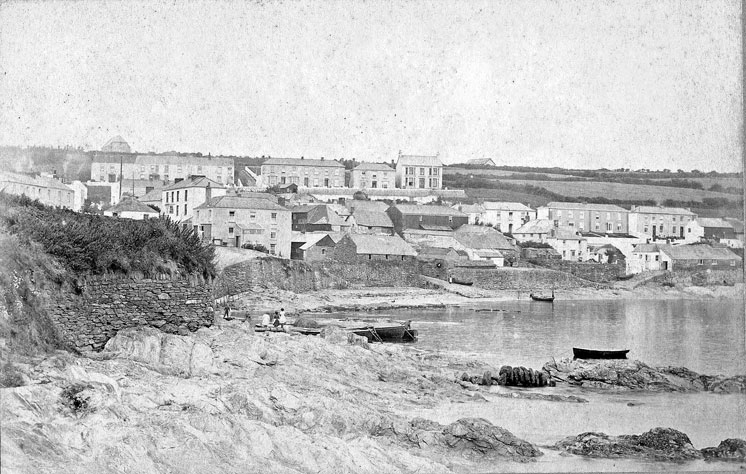Gerrans Parish Heritage Centre


The parish takes its name from a well documented sixth century saint Gerent… King of Cornwall. Little is known of his association with the parish, apart from myth and legend. His body is said to have been rowed across the bay in a golden boat with silver oars and buried in Carne Beacon, though excavation revealed nothing to substantiate this. At Curgurrell there exists an earthwork named by a 19th century antiquarian ‘Dingerein’ but this structure dates from the Iron Age, considerably predating Gerent.
Geographically the parish lies between the river and the sea, both of which determined the occupation of many of the inhabitants. Within it are two villages, Gerrans and Portscatho. Gerrans, the churchtown, is the more ancient of the two, centred around the parish church, while Portscatho evolved from a scattering of cottages amidst a number of pilchard cellars until the mid nineteenth century when the prosperity of the merchant shipping trade led to the building of many substantial houses along the seafront.
The nineteenth century censuses show that the main occupation in Gerrans was that of agricultural labourer while at Portscatho merchant seamen and fishermen predominated. Pilchard seining flourished until the early 1900s, after which the large shoals no longer appeared close inshore. The merchant schooner trade also flourished with locally owned and manned schooners setting out from Percuil to Newfoundland for cod, returning with their cargo to the Mediterranean ports.
By the beginning of the twentieth century, as traditional occupations declined, tourism took over. Householders with sufficient room catered for ever-increasing numbers of summer visitors. Nowadays many of the houses in the old village are second homes and local families live in modern homes nearby.
